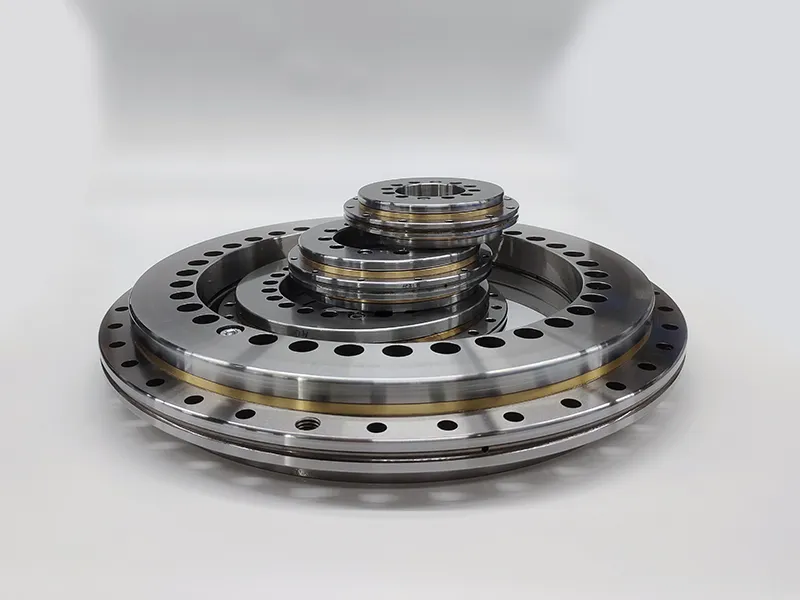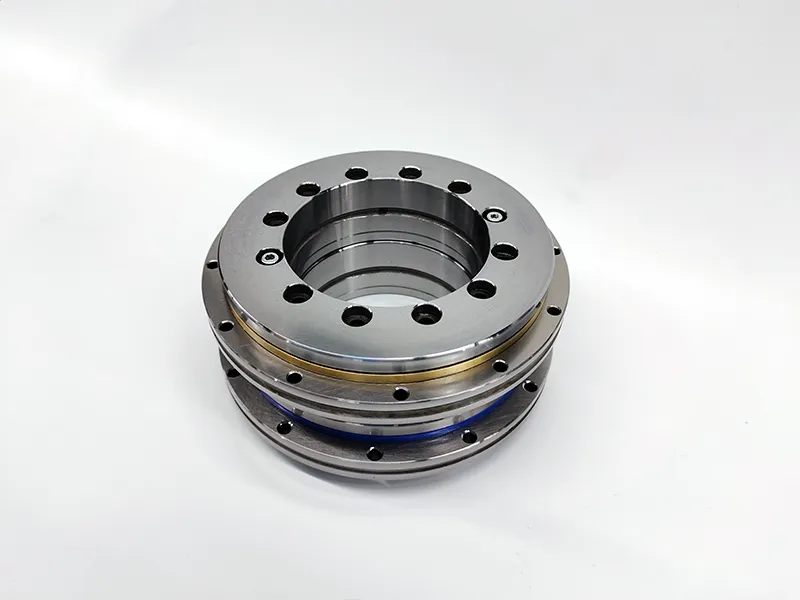Limiting the bearing of a rotary bearing, también conocido como rodamiento giratorio, Implica varios métodos para controlar su movimiento y garantizar que funcione dentro de parámetros seguros y funcionales.. Estos rodamientos se utilizan en maquinaria y equipos pesados., incluyendo grúas, excavadoras, y turbinas eólicas.
Métodos de límite de rodamiento giratorio.

1. Proper Installation
Aligning Bearings Correctly: Ensure precise alignment during installation to avoid uneven load distribution and premature wear.
Mounting Surface Quality: Ensure the mounting surface is flat, limpia, and properly machined to prevent distortions.
Preloading: Apply the correct preload to eliminate any play or clearance in the bearing, improving stability and load distribution.
2. Load Management
Load Limits: Adhere to the manufacturer’s specified load limits, including axial, radial, y cargas de momento.
Balanced Loading: Distribute loads evenly across the bearing to prevent uneven wear and reduce stress concentrations.
Avoid Overloading: Do not exceed the bearing’s load capacity, as this can lead to deformation and failure.
3. Lubricación
Regular Lubrication: Ensure the bearing is regularly lubricated with the appropriate type and amount of lubricant to minimize friction and wear.
Lubrication Monitoring: Monitor the lubrication condition and schedule regular maintenance to replenish or replace the lubricant as needed.
Sealed Bearings: Use sealed bearings to protect against contaminants and retain lubrication.
4. Control de temperatura
Operating Temperature: Keep the bearing within the recommended operating temperature range to prevent overheating and thermal expansion.
Cooling Systems: Implement cooling systems if necessary, to dissipate excess heat generated during operation.

5. Vibration and Shock Control
Vibration Dampening: Use dampening materials or devices to reduce vibrations that can cause bearing fatigue.
Shock Absorption: Implement shock absorbers or buffers to protect the bearing from sudden impacts and shocks.
6. Regular Maintenance and Inspection
Periodic Inspections: Conduct regular inspections to detect signs of wear, daño, o desalineación.
Condition Monitoring: Use condition monitoring techniques such as vibration analysis, temperature monitoring, and acoustic emission analysis to detect early signs of bearing issues.
…
For more detailed information on how to limit the rotary bearing, por favor haga clic aquí: https://www.boyingbearing.com/en/a/news/rotary-bearing-limit.html


